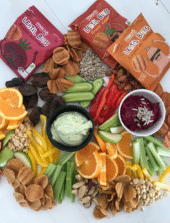
How to Help a Picky Eater?
Food aversions are becoming more common as societal changes have affected our family choices – time poor lives making convenience a high priority. These changes affect our kids immensely particularly with food options. As we are the prime role models our children follow, our guidance in food options and our actions affect them immensely. However, we can often be faced with children that are picky eaters for other reasons.
Children create food aversions due to texture and other times it’s because of odour, temperature, or even just the way food looks. Sometimes you can determine what fuels this selectiveness with food. They control very little in their little universe, so frequently they will control what they can: food intake and elimination. Both of which are struggles parents report on frequently.
Some people refuse to eat meat and others refuse dairy. Many also refuse most vegetables and even fruit. Unfortunately, in our over-processed culture, we have gotten away from the basics, and have much greater opportunity for our children to sample the more sugary, salty, fatty foods that prior generations rarely ate. It is important that you offer your picky eaters nutritious foods that they like and continue introducing new foods into their diet until they no longer look at them as new.
Many children just resist change, so even if they like a particular food they may not eat a new brand of that very item. I’d encourage you to continue introducing the new food so that over time, it is no longer new or a change from what they are used to.
On that note, if your child is very picky, only work on introducing a few new foods to their palette one at atime.
Stick with foods that are the most similar to those they tolerate and expand from there.
The upcoming school holidays are the perfect time to encourage new foods for kids.
The best way to encourage a picky eater is to create enticing vibrant and nutritious platters of many food choices with healthy options.
Setting platters for meals in summertime are an enticing way to eat. It encourages children to try by seeing the raw colour and smells of fresh foods. Personally this is the way I go with my ‘picky eater’ by creating multiple platters to entice the eye, smells and also watching other kids try too. I would layer up on the plate a variety of textures and tastes. Adding ONE new thing weekly. This did take time and yes there were many winners and losers on the food platter however more winners than losers over time. Patience is the key to this process and encourage the eater when they did taste smell and then eventually eat and swallow.
Some favourite platters include:
- Breakfast platters – fruit, breads in shapes, dry cereal of all kinds, mini Bircher pots and juices. All mini tasters – test juices using eggs cups for kids – they think it’s fun and will try multiple not realizing the nutrients they are consuming.
- Lunch platters – mini wraps in sushi size, fruit, nuts, raw vegetables and homemade raw dips.
- Snack platters – Macro Lentil Bites, Macro Organic Nuts Almonds and Macro dry Roasted Mixed Nuts , raw veggies, homemade dips and, fruit,
- Dinner platters – raw veggies, baked veggies cut small, corn cobs, chicken pieces, fish pieces and cauliflower rice bowls.

TOP 3 b. tips of how to platter:
Platter by numbers
Groups of three give your platter an attractive symmetry, three different cheeses, three different crackers, three different berries – it just balances nicely on a platter.
Rather than placing “clumps” of single ingredients over your board, spread the items around evenly. This looks better, and means your guests can reach for ingredients from any part of the table.
Start by spacing three cheeses or dips across the board, then slowly build around them, filling in any gaps with crackers, lettuce cups and small snacky items such as nuts and fruit, and finishing with the brightest berries or flowers on top.
Keep it bite-sized
Bite size is key and don’t put anything too big that’s going to be too awkward to eat. Everyone wants one or two bites maximum. The whole beauty is you can eat a little bit of everything and you won’t be too full to eat anything else.
Make it colourful
People really do “eat with their eyes” so the more colourful your platter, the better. Berries and fruits give it a visual burst. Use a diverse amount of products – nuts, seeds and crackers, so there is something on there for everyone.
For kids it is particularly important quantities are much smaller. Cut cucumbers into stars or watermelons into hearts, for example, and get the kids involved by asking them to place blueberries on circles of watermelons as eyes.
It’s important to note, patience is key in this situation and ensure everyone in the house hold is onboard to encourage the value of the food to the little person’s body because it’s all about health and energy in the end.
Time to platter up!
Health and Happiness,
b.x
TRY this RAW DIP -its a winner for kids
https://belindanorton.com/b-macro-turmeric-ginger-carrot-dip/